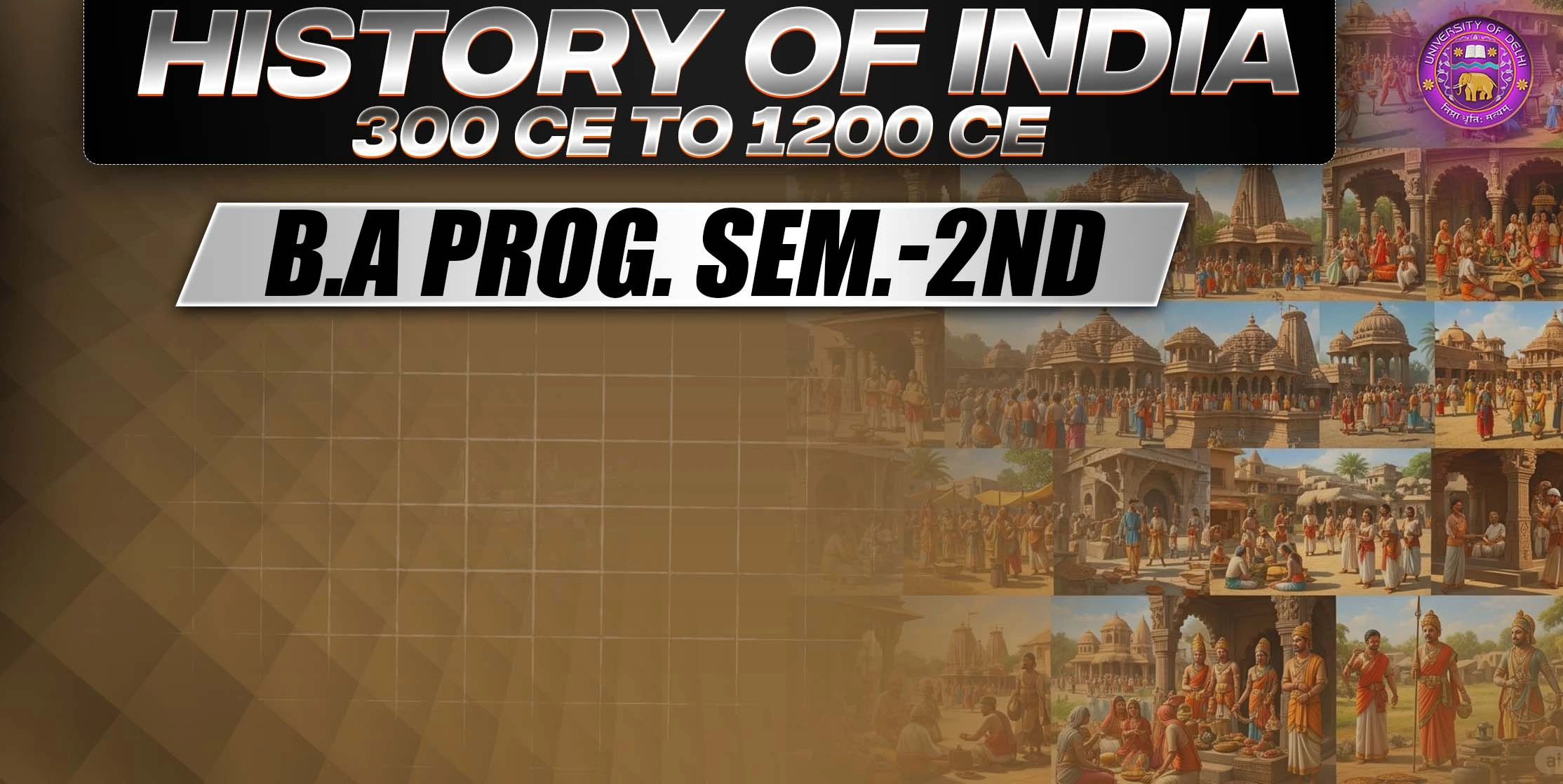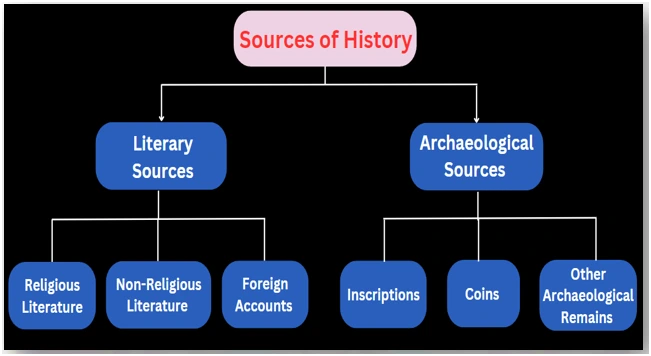
Get in Touch
We will get back to you within 24 hours.
Welcome to MVS Blog

Answer - Introduction
During the period from 300 to 1200 AD, various sources provide valuable insights into the history of civilizations around the world. These sources encompass a wide range of materials that shed light on the political, social, cultural, and economic aspects of this era. Historians rely on these diverse sources to reconstruct the events and understand the dynamics that shaped societies during this time.
Some key sources of history from 300 to 1200 AD include written records, archaeological findings, religious texts, oral traditions, and artistic representations. Each of these sources contributes to our understanding of the past, allowing us to glimpse into the lives of people who lived centuries ago and comprehend the historical developments that unfolded across different regions.
The sources of history from 300 to 1200 AD

Literary Sources
In the context of the history of India, most of the sources are literary sources. In ancient times, books were written by hand, are called manuscripts. Manuscripts were written on palm leaves and Bhojpatra.
1. Religious Literature
The Religious Literature of India is too vast. It includes the Vedas, the Upanishads, the great epics like the Ramayana and Mahabharata, and the Puranas of the Hindus. These are like mines of information about religious beliefs, social systems, people’s manners and customs, political institutions, and conditions of culture.
2. Non-Religious Literature
The religious texts mainly give us information about the religious ideology and philosophy. Thus, it gives us a very little information about political activity, whereas, non-religious texts throws light on almost all the aspects of the society. Few non-religious texts are:
Ashatadhayayi- It was written by Panini and is the oldest grammer/literature of India. It gives us information about the political, social and religious condition of Pre-Mauryan period.
Mudrarakshasa- Mudrarakshasa of Vishkhadutta gives us information about the Mauryan period. Arthashastra was written by Kautilya also identified as Vishnugupta and Chanakya. It was divided into 15 parts. It gives us information about Indian political system. It also throws light on the condition of Mauryan age Mahabhashya of Patanjali and Malvikagnimitram by Kalidasa gives us information about ‘Shunga Dynasty’. Kamasutra of Vatsyana gives information of sexual life, social life, physical relations, family life, etc . this explains that these sources in scientific ways that it was created to give sex education to the youth of that period. ‘Mricchhakatikam’ by Shudraka and ‘Dashkumaracharita’ by Dandin also provides us information of the social life of that period.
3. Foreign Accounts
Foreign Accounts are a part of literary sources which consist of writing of Greek, Roman, Chinese and Arab travelers. In contradiction to Indian historians, foreign travelers too interest in Non-religious incidence. Thus, their work throws light on political and social conditions.
Fa-Hien: He arrived in India in the fifth century AD, during the Gupta era. He was indeed a Buddhist monk who travelled to India in order to learn more and explore Buddhist historical sites. He wrote "Records of Buddhist Countries", a book that describes Northern India's civilization and culture during the Gupta era, during his 3 years of trip.
I-tsing: He was a Buddhist monk who also shared insightful knowledge about Indian society, religion, and culture.
Archaeological Sources
1. Inscriptions
The inscriptions are the most important and reliable sources of Indian history. The place of records is very important in relation to Indian history, certain and important information about Indian history has been obtained from the records of many rulers of ancient times. These inscriptions have been found engraved on stones, pillars, metal strips and clay objects.
2. Coins
Coins and currencies are one of the most important archaeological sources to know the ancient Indian history. In ancient times, coins were mainly made from gold, silver, copper, brass and bronze etc. Only signs have been found, Instead of writing on ancient coins, in which the names of kings, their titles, pictures, dates are described.
3. Other Archaeological Remains
Many architectural and sculptural remains have been found between 300 and 1200 AD, most of which are religious in nature. Excavations at sites such as Old Fort, Ahichhatra, Basad, Bhita, Arikamedu and Kaveripattinam have yielded important archaeological remains. There are lack archaeological evidence relating to the cities of the Gupta period.
Limitations
The study of history from the period between 300 to 1200 AD faces several limitations due to various factors. One of the primary challenges is the scarcity and reliability of sources. Many historical documents and artifacts from this time have been lost, destroyed, or are incomplete, making it difficult for historians to piece together a comprehensive narrative. Additionally, the surviving sources often come from a limited perspective, mainly focusing on the perspectives of the ruling elite or religious institutions, which can lead to a biased understanding of events.
Furthermore, the language barrier poses another limitation. The majority of surviving sources are written in ancient languages such as Latin, Greek, or Old English, which require specialized skills and knowledge to interpret. This language barrier can hinder the accessibility and interpretation of historical records, leaving gaps in our understanding of the period.
Conclusion
The sources of history from 300 to 1200 AD, including written records, archaeological evidence, and oral traditions, provide valuable insights into the past. However, it is important to recognize their limitations, such as biases, fragmentary nature, lack of diversity, interpretation challenges, and absence of voices, in order to approach historical research with critical thinking and consider multiple perspectives.
0 Response